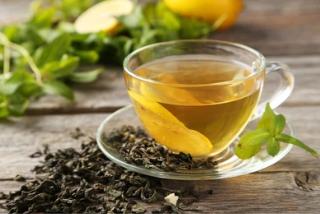
With the improvement of people's living standards, food hygiene has become one of the most important concerns of consumers, and of course, tea products are no exception. Therefore, pesticide residues in tea, heavy metal content, radioactive substances, inclusions, and other hygiene aspects of the limited indicators and the corresponding detection methods should come into being. Among the hygiene indicators of tea, the indicator of pesticide residues is the most important. In addition, other aspects of tea hygiene indicators are also increasing, and tea hygiene inspection is gradually becoming an essential part of tea quality management. Although tea production areas have regional and varietal differences, they must follow the national hygiene standards for tea products.
Lifeasible offers a one-stop platform for tea hygiene testing through a global network of state-of-the-art laboratories covering a wide range of black, green, yellow, white, and black teas, among others. Our solution covers the entire process, from sample processing to data analysis; you only need to provide the original sample. We will process and test the samples in strict accordance with the standards and provide accurate test reports.
Our solutions include:
| Tea Hygiene Testing Items | Tea Hygiene Testing Items Description | Tea Hygiene Testing Methods |
|---|---|---|
| Tea Pesticide Residue Testing | Detection of pesticide residues in tea according to international standards, including glyphosate, organophosphorus pesticides, hexachlorobenzene, DDT, dicofol, cyhalothrin, bifenthrin, cypermethrin, deltamethrin, methamidophos, leuconazole, dichlorvos, fenitrothion, quinpirole, etc. |
|
| Tea Heavy Metal Testing | Detection of heavy metals in tea, including lead, copper, chromium, cadmium, mercury, arsenic, and fluoride, according to international standards. | |
| Tea Additive Testing | Detection of additives in the production and processing of tea according to international standards, such as artificial coloring: lemon yellow, amaranth red, carmine, sunset red, bright blue, erythrosine, etc. | |
| Tea Rare Earth Elements Content Testing | Detection of 16 rare earth content in tea, such as lanthanum (La), cerium (Ce), praseodymium (Pr), neodymium (Nd), promethium (Pm), samarium (Sm), europium (Eu), gadolinium (Gd) Terbium (Tb), Dysprosium (Dy), Holmium (Ho), Erbium (Er), thulium (Tm), ytterbium (Yb), and lutetium (Lu). | |
| Tea Anthraquinone Testing | Determination of anthraquinone content in tea according to international standards. | |
| Tea Toxins Testing | Detection of toxins in tea according to international standards, such as penicillin, yellow asparagine, aflatoxin, etc. |
(1) Sample processing.
(2) Determination of tea hygiene indicators, as detailed in the table above.
(3) Generate test results.
(4) Data analysis and evaluation.
Lifeasible offers customized solutions to detect pesticide residues, heavy metals, additives, rare earths, anthraquinones, and toxins in tea, to enable our customers to produce tea that meets national tea hygiene standards. Our dedicated team provides customized solutions to ensure that our clients' needs are met. If you are interested in these services or solutions, please contact us for the latest information.
Lifeasible has established a one-stop service platform for plants. In addition to obtaining customized solutions for plant genetic engineering, customers can also conduct follow-up analysis and research on plants through our analysis platform. The analytical services we provide include but are not limited to the following:
Why Do Plants Blush When They Are Hungry?
April 26, 2024
STU-CRISPR System Improves Plant Genome Editing Efficiency
April 19, 2024